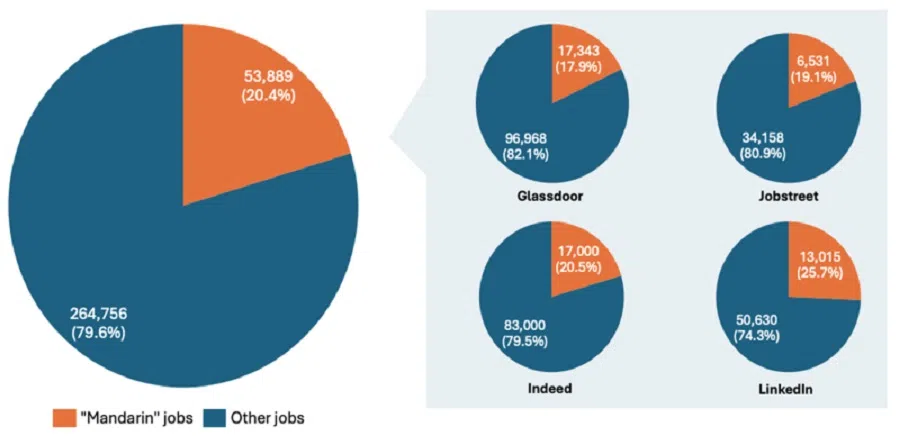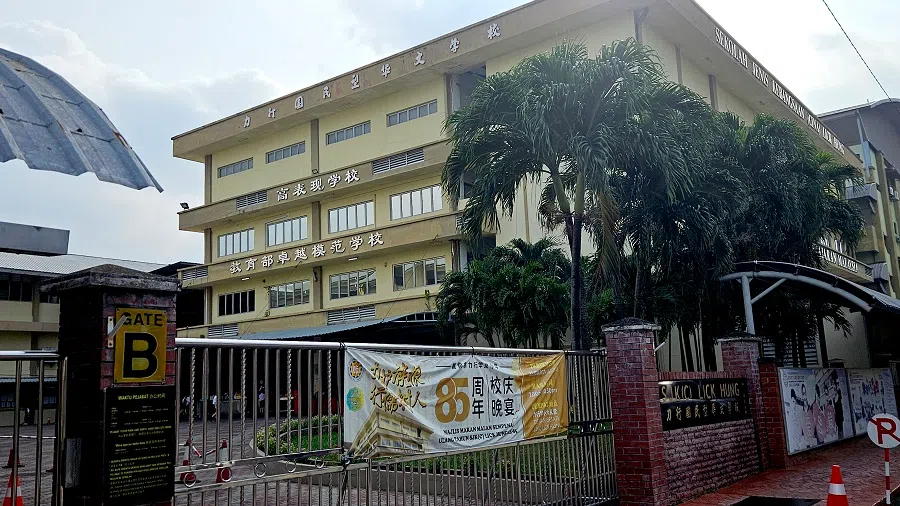The new Mandarin speakers: A Malaysian phenomenon
More non-Chinese Malaysians are enrolling their children in Chinese vernacular primary schools, and Malaysia’s job market increasingly favours Mandarin speakers as China’s power grows. How might this impact Malaysia’s inter-ethnic relations?

On the eve of Malaysia’s 67th Independence Day, a Malaysian Chinese YouTuber Wabikong released a gameshow video entitled “Guess the Real Chinese (Malay Version)” to wide acclaim. In the video, a blindfolded guest guessed which one of the five Mandarin-speaking participants was a Malaysian Chinese.
The four Malay participants spoke Mandarin fluently and demonstrated a depth of cultural knowledge of slang and eateries that matched that of a native speaker. As a result, the guesser repeatedly failed, eliminating the sole Malaysian Chinese participant early.
This video and its predecessor — in which the player tried to pick the sole Malaysian Chinese among mostly Mandarin-speaking Indian participants — garnered over half a million views as of November 2024.
Businesses of Chinese language centres, like Fasih Mandarin in Malay-majority Kuantan, Pahang, have boomed.
Chinese language gains popularity
There appear to be more non-Chinese Malaysians embracing the Chinese language. While no official data exists on non-Chinese Mandarin speakers in Malaysia due to a lack of collection, anecdotal evidence suggests a rise, especially among Malays.
Businesses of Chinese language centres, like Fasih Mandarin in Malay-majority Kuantan, Pahang, have boomed. Politicians like former health minister Khairy Jamaluddin and PAS MPs have embraced the language, influencing and reflecting a broader trend.
Rise in non-Chinese students in Chinese vernacular schools
A reliable but incomplete proxy is the non-Chinese student enrolment in Chinese vernacular primary schools (Sekolah Jenis Kebangsaan Cina, SJKC). As Figure 1 shows, the non-Chinese enrolment in SJKCs soared from 17,309 in 1989 to 101,011 in 2020: a 484% increase in three decades. This means non-Chinese students now account for a fifth of all SJKC students.

The data indicate that Malays account for about 15.3% of the total student population in SJKCs. This is significant for Malaysia’s Malay-Chinese ethnic relations, as it partly represents early-stage contact between sizeable groups in an increasingly mixed setting that was traditionally more homogenous.
Listings in the top job portals like Jobstreet, LinkedIn, Indeed, and Glassdoor specifying a “Mandarin” requirement account for 20.8% of total jobs in Malaysia.
A news report featured a survey by the foremost Malaysian Chinese school federations, Dong Zong and Jiao Zong, which revealed the two main reasons parents chose SJKCs for their children: the practical value of the Chinese language and the schools’ management. The former stems from China’s rise as an economic superpower and its investments in Malaysia, which in turn has increased demand for Chinese language fluency in the local job market.
Greater demand for Mandarin-literate employees
Malaysia’s job portal data corroborates this finding. Listings in the top job portals like Jobstreet, LinkedIn, Indeed, and Glassdoor specifying a “Mandarin” requirement account for 20.8% of total jobs in Malaysia (Figure 2). Jobstreet by Seek Malaysia’s latest hiring report also indicated an increasing demand for Mandarin-literate employees.

It makes sense, then, that job seekers’ desire for fluency in Mandarin has outpaced that for other languages, including English. Mandarin is now the core language challenge faced by job seekers in Malaysia.
Notably, a paper by Lee Hwok Aun and Mohammed Abdul Khalid stated that a Malaysian Malay applicant who indicated Mandarin fluency on their curriculum vitae stood a better chance of being interviewed than one who did not. Without this advantage, Malays were five times less likely than Chinese candidates to be called back for an interview (specifically, a Chinese candidate at 22.1% versus a Malay one at 4.2%).
Resulting challenges
However, the Chinese-speaking trend masks underlying challenges. First, Mandarin Chinese is one of the most challenging languages to master due to its tonal nature, extensive character systems, and lack of cognates. Non-Chinese SJKC students often struggle with the curriculum, leading to cases of students transferring out. Non-Chinese parents share stories of investing heavily in extra tuition and hands-on guidance to get their children through a demanding system.
Looking ahead, SJKCs will be forced to accommodate the growing non-Chinese student population, which may challenge their raison d’etre: cultural preservation.
Second, the economic value of the Chinese language for non-Chinese students as a career-enhancing skill may be diluted after they leave their SJKC, as Chinese (or any language) proficiency diminishes without constant use. Most SJKC students, including Chinese students, transition to national or international schools after primary school. Thus, they will not have Chinese as their primary medium of instruction: only 3.4% of Malaysia’s secondary school students enrol in a Chinese vernacular secondary school.

Last, language and vernacular schools remain a political flashpoint in Malaysia. In February 2024, the Federal Court ruled on the constitutionality of vernacular schools as a result of a court case brought by conservative groups in the Islamic Education Development Council (Mappim), the Majlis Ulama Ikatan Muslimin (Isma), and other parties. Although the highest court upheld the use of Tamil and Chinese in Malaysia’s schools as part of constitutional protection, such challenges indicate a continued dissatisfaction against vernacular schools by those who see them as a barrier to ethno-religious integration.
Chinese vernacular schools are among the most striking features of Malaysia’s multiculturalism and will remain a site of deep political and ethnic contestation. Yet the trajectory of non-Chinese enrolment presents a dilemma for SJKC defenders.
Looking ahead, SJKCs will be forced to accommodate the growing non-Chinese student population, which may challenge their raison d’etre: cultural preservation. Lower birth rates among Malaysian Chinese mean fewer ethnic Chinese SJKC students, and this will further diminish the Chinese community’s bargaining strength. The question is whether they can accept the new reality — a Chinese school with sizeable and increasing non-Chinese enrolment — as a form of cultural preservation.
This article was first published in Fulcrum, ISEAS – Yusof Ishak Institute’s blogsite.





